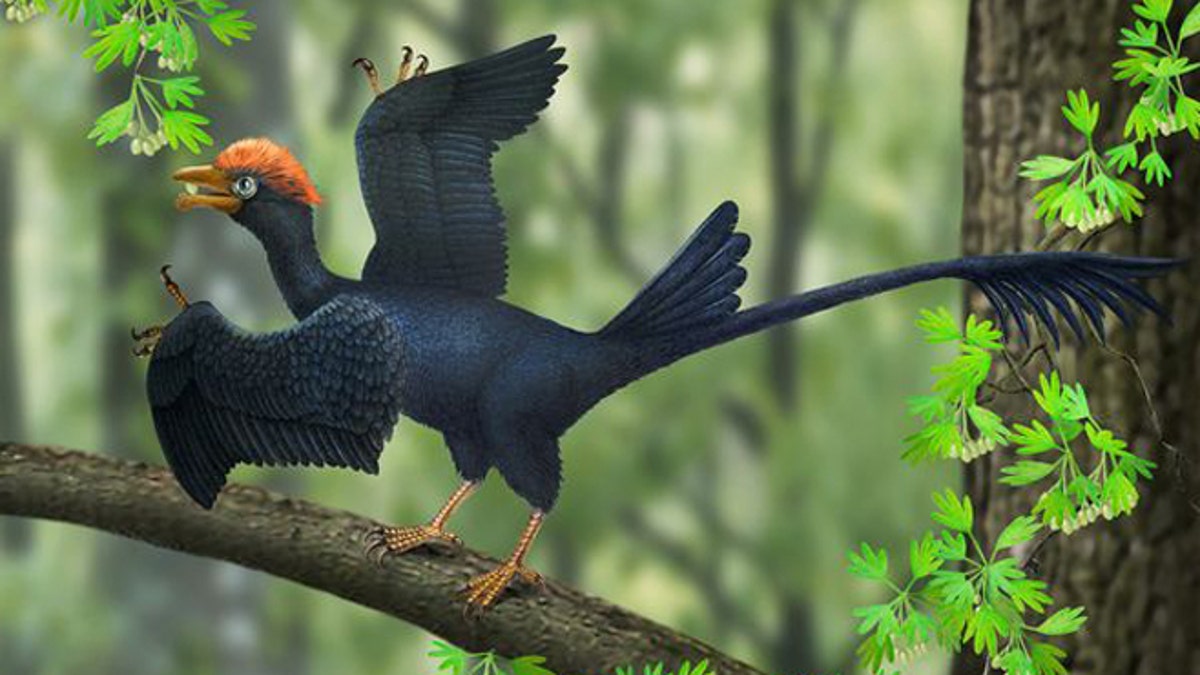
A reconstruction of a two-tailed 120-million-year-old Jeholornis. (Aijuan Shi/National Geographic)
120-million-year-old bird sported not one, but two tails, paleontologists found. The discovery alludes to a complicated evolutionary path in the tails of birds we see today, National Geographic reported.
The second-oldest known bird, Jeholornis, lived in what is today China along with other feathered prehistoric animals. Fossils show the Jeholornis was the size of a turkey, had claws on its winged forelimbs with three small teeth in its lower jaw.
Now, paleontologists are looking at the rear end of the large birds. They not only possess a long-fan feathered tail but also a second tail frond.
"The 'two-tail' plumage of Jeholornis is unique," according to a study published in the Proceedings of the National Academy of Sciences. The study was led by Jingmai O’Connor of the Chinese Academy of Sciences in Beijing.
Much like today's male peacocks which sport colorful feathers to attract their mates, the study suggests only male Jeholornis had the eye-catching tail fronds.
"Clearly the display aspect of the frond would have been undeniable," says paleontologist Mark Norell, of the American Museum of Natural History in New York, who was not part of the study. "It calls to mind living birds, even peacocks, which display broad plumes of feathers."
